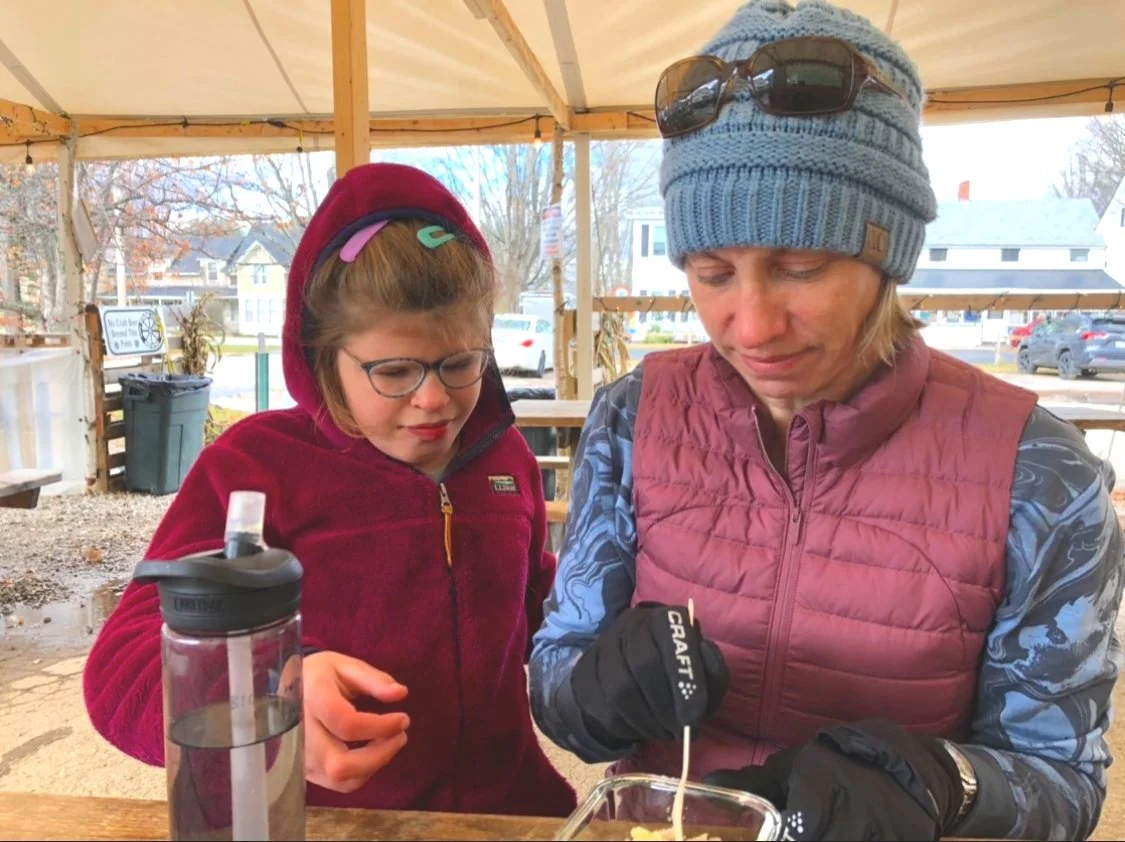Back and forth. That's something we've been working on with Tess for ages. There's a ton of one-way traffic with her. She communicates, we respond by providing what she's requesting. Done. Or, sometimes anyway, we say something to her, she responds through actions, and that's it. We wait for her to take it to the next step. To repeat what we've said. Heck, to even copy a sound that we're making. But in general it just doesn't happen.
She’s almost entirely nonverbal. She has mixed expressive-receptive language disorder. We long for a day when there's a steady back and forth with her. The closest we come is playing with a ball. You know this type of ball. It is known as a kickball. Can also be used for dodgeball. Big rubber ball. Tess will do back and forth with the ball. For many turns. “My turn.” “Okay, Tess's turn.” “Okay, Mom's turn.” She'll do that. So she gets the picture. That exchanges aren't supposed to end right away. That there's supposed to be more. A back and forth.
And I think we're starting to develop a solution here. See, there's something I've noticed. Tess responds well if you pair sounds with pressure and vibrations. Things you can feel. So not just the audio, but a physical experience that goes with it. Example. She's sitting with me, curled up on my lap. And I'll do a snort. Ideally a long snort, with a sort of variation in it. She definitely hears it. And if I do the snort while also pushing my nose into her shoulder or her neck, she'll take a beat. And then, on occasion, she'll do it right back. Snorting at me. Even copying the nuzzling thing with her nose. In her face, when we do this with her, it's unmistakable. You can see she is lighting up. She's recognizing that we can speak this common language for a minute or two.
"You speak snort?”
“Yes, I am fluent in snort."
So. Today, on the way to school, there was a towel in the backseat next to her. She picked it up. Pushed her face into it. And did this sound: chwahhhh. I was driving. So I couldn't do anything with the towel. But I did the sound right back to her. Chwahhhhh. She did it back to me. With the towel on her face. Her drive to school is about seven minutes from our front door. But we did that sound back and forth, for probably four of those minutes. Off and on. Over and over. It's almost like the towel was a microphone and the feeling of having it on her face, it gave her this signal to go ahead and have this conversation with me.
What is this all about? Is there some tactile piece that needs to be part of talking to Tess? We've tried weighted vests and blankets and such. She despises those. Throws them off instantly. She also doesn't like it when you take her hands and try to do anything like sign into them. She fights like crazy to pull away, so that probably wouldn't work either. But what if this could really help her? I'm just thinking out loud here. What would it look like to give her this physical feedback each time we want to hear from her? What could we add alongside the audio part of our conversations with her to make this back-and-forth more of a thing? Is it just the vibrations that she's feeling? Or is it the sensation of something touching her face, like the towel?
There might be something to this. There’s a scientist at MIT named Lynette A. Jones. She’s spoken about tactile cues and wrote about tactile communication systems based on vibrotactile signals in a chapter of a book called Enhancing Performance for Action and Perception - Multisensory Integration, Neuroplasticity and Neuroprosthetics, Part II, a series from Progress in Brain Research. I emailed Dr. Jones and am waiting to hear back.
This is the part of the blog when I tell you that I don't know these answers. I have these questions but not the solutions. We'll keep trying stuff.
